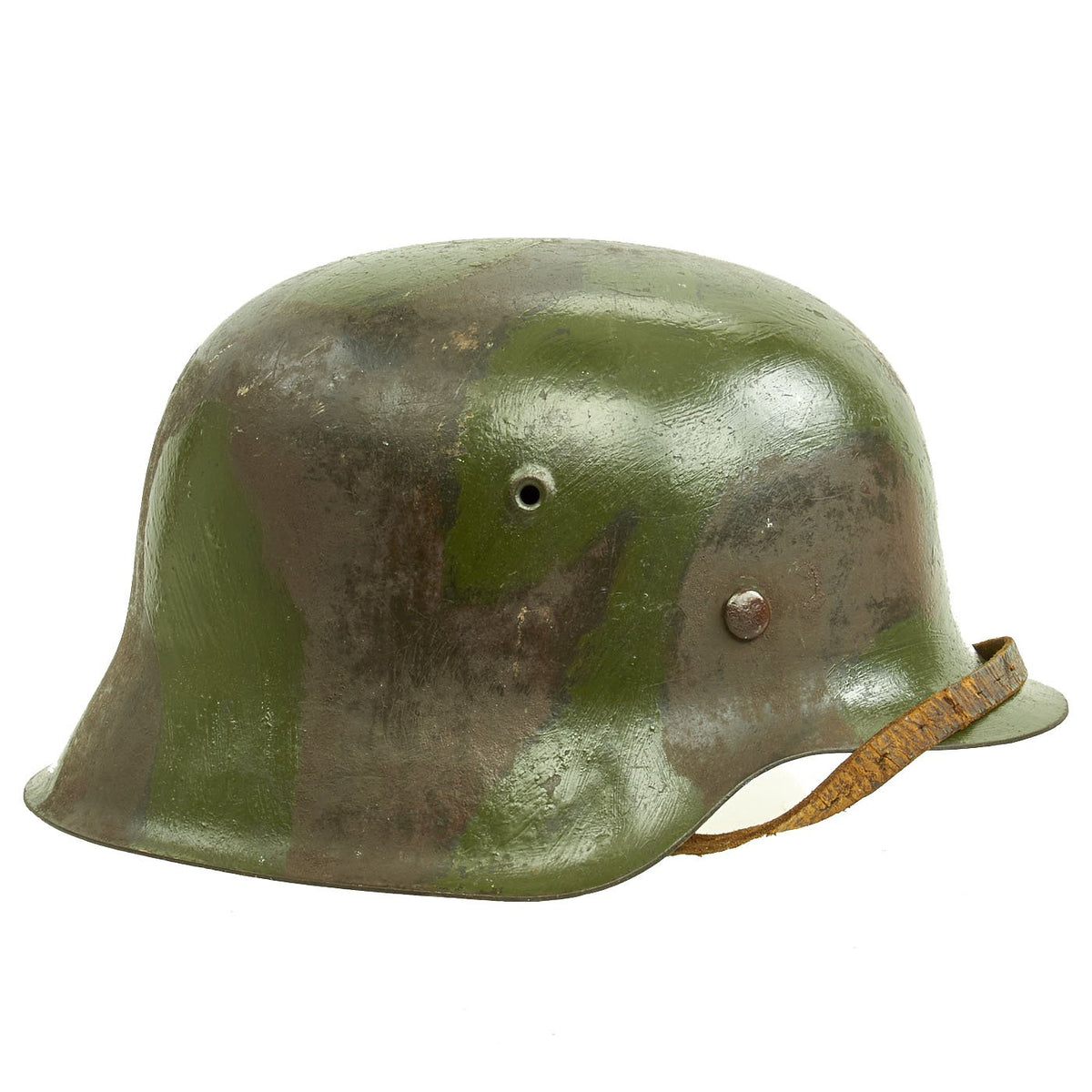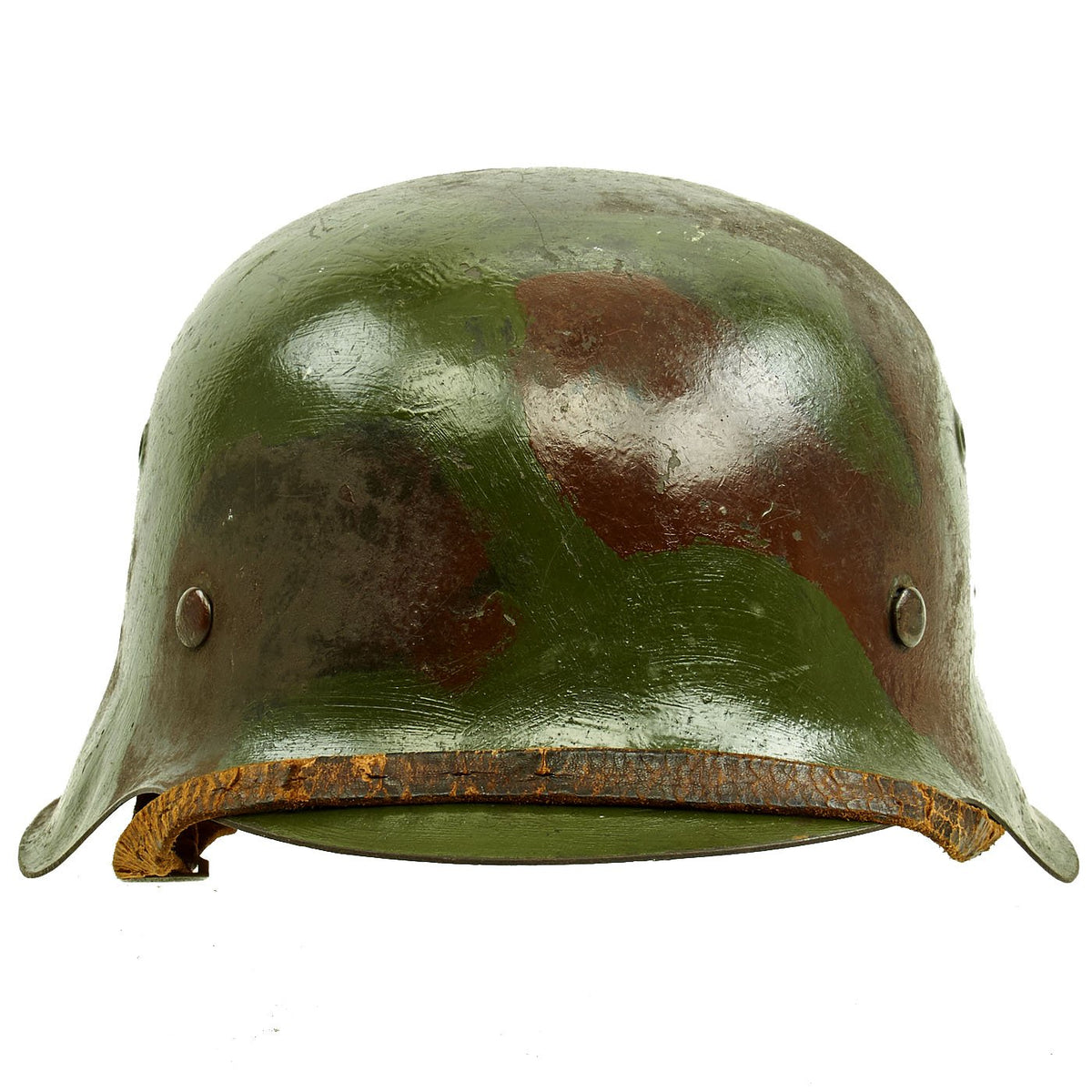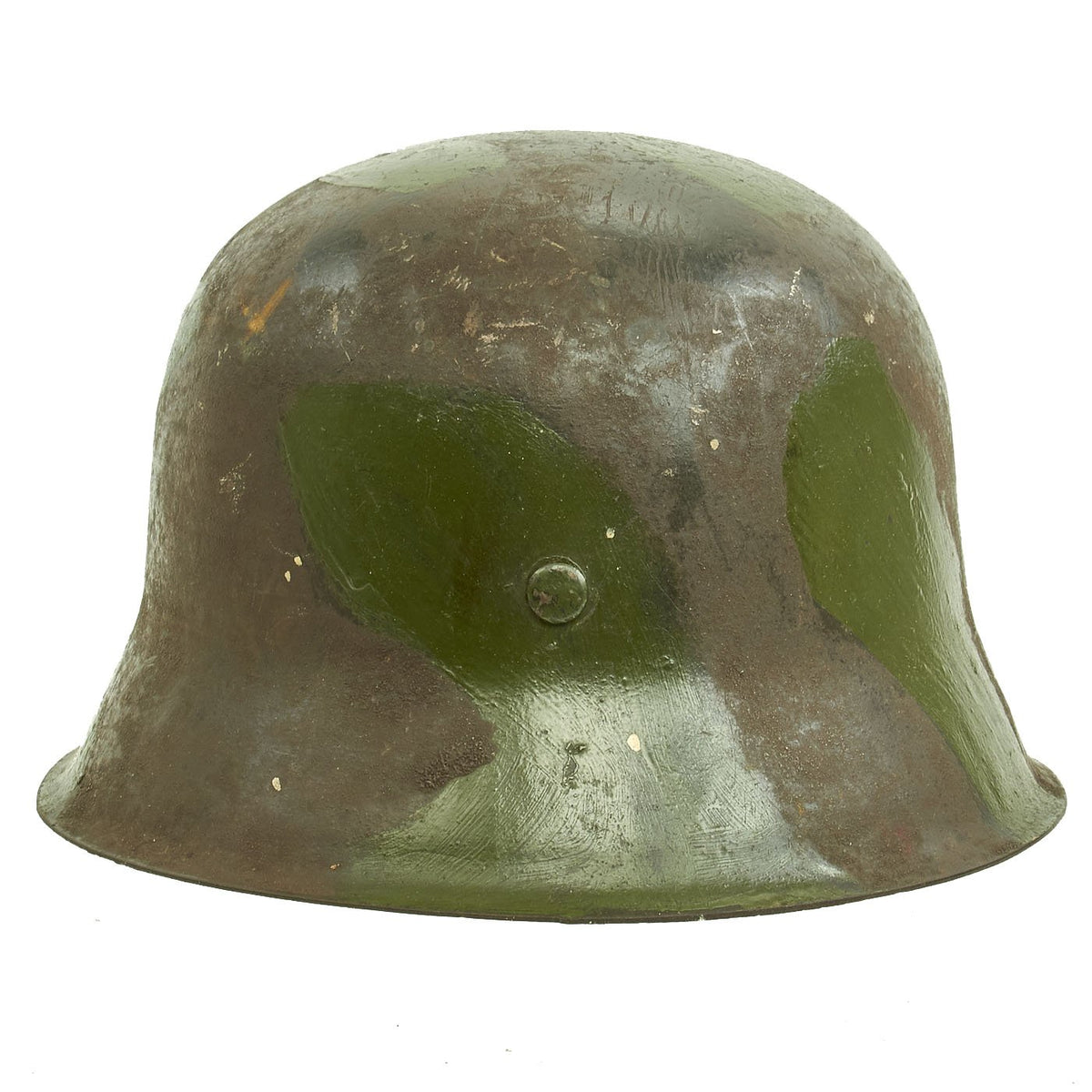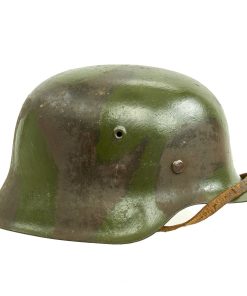Original German WWII Heer Brown & Green Camouflage M40 Helmet with 58cm Liner – Marked ckl66 Original Items
$ 1.995,00 $ 498,75
Original Item: One-of-a-kind. This is what we all look for and can never find! An incredible 100% authentic Heer Army Field Repaint Camouflage Model 1942 German Helmet! While iconic, the Feldgrau (field Gray) used by the German Army (Heer) during WWII was not always the best for concealment. Once the Allies started invading Europe, more effective camouflage was needed, as Germany was now on the defensive, and rapidly losing ground.
The liner on this helmet is dated 1943, so most likely it was issued in time for the D-Day invasions, and this camouflage is very similar to the “Normandy Pattern”, except that it was not done at arsenal apparently, and only is brown and green, without the usual tan. The green paint is somewhat glossy, while the brown has a rougher texture in places, and the original field gray was left visible in some places. This may have been a helmet used close to the fall months, around when operation Market Garden was launched.
This stamped sheet steel construction helmet retains much of its original Camouflage paint, but shows expected wear and use. It has many areas where the paint has chipped off, and the original “feldgrau” paint can be seen underneath. Field repainted helmets were not stripped before the camouflage was added, and sometimes the oversprayed paint did not adhere well. The inside of the helmet still has the original paint as well, though it has light surface rusting in places. There are a few spots of brown paint on the inside rear neck guard.
The rear interior of the apron has a stamped manufacturer’s code and size: ckl66, indicating it was manufactured by Eisenhuttenwerk AG, Thale Harz. Towards the end of the war, the ET marking was discontinued in favor of three letter code ckl. It is also marked with lot number 3556 on the underside of the rear skirt. Size 66 is a nice large size that can accommodate liners from 58cm to 59cm or US 7 1/4 to 7 3/8. Size 66 shells are much harder to find and are therefore more valuable to a collector.
All three liner retaining pins are intact and retain the camouflage paint to a varying degree. The interior of the helmet still has the original M31 leather liner with all eight of its fingers intact. The liner is a bit dry and worn in some areas but is in overall good solid condition and not stiff. The original top tie is present and not broken. The late war galvanized steel liner band is marked on the left side with 66 n.A. / 58, indicating a size 58cm liner for a 66cm shell. The right side displays the manufacturers National Business Number (R.B. Nr.) and date:
R. B. Nr.
1943
0 / 0251 / 0111
The chin strap is intact, but is in very delicate condition, with a lot of leather dry rot and cracking. It has aluminum fittings, so it may have been taken from a Pre-WWII helmet during the war.
Overall a stunning Brown & Green Camouflage M40 Helmet offered in fantastic condition! Ready to research and display!
The first “modern” steel helmets were introduced by the French army in early 1915 and were shortly followed by the British army later that year. With plans on the drawing board, experimental helmets in the field, (“Gaede” helmet), and some captured French and British helmets the German army began tests for their own steel helmet at the Kummersdorf Proving Grounds in November, and in the field in December 1915. An acceptable pattern was developed and approved and production began at Eisen-und Hüttenwerke, AG Thale/Harz, (Iron and Foundry Works), in the spring of 1916.
These first modern M16 helmets evolved into the M18 helmets by the end of WWI. The M16 and M18 helmets remained in usage through-out the Weimar Reichswehr, (National Defence Force, Circa 1919-1933), era and on into the early years of the Third Reich until the development of the smaller, lighter M35 style helmet in June 1935.
In an effort to reduced construction time and labor costs minor modifications were introduced in March 1940 resulting in the M40 helmet. Further construction modifications were undertaken in August 1942 resulting in the M42 helmet.
Fast Shipping with Professional Packaging
Thanks to our longstanding association with UPS FedEx DHL, and other major international carriers, we are able to provide a range of shipping options. Our warehouse staff is expertly trained and will wrap your products according to our exact and precise specifications. Prior to shipping, your goods will be thoroughly examined and securely secured. We ship to thousands clients each day across multiple countries. This shows how we're dedicated to be the largest retailer on the internet. Warehouses and distribution centres can be located throughout Europe as well as the USA.
Note: Orders with more than one item will be assigned a processing date depending on the item.
Before shipping before shipping, we'll conduct a thorough inspection of the items you have ordered. Today, the majority of orders will be delivered within 48 hours. The delivery time will be between 3-7 days.
Returns
The stock is dynamic and we cannot completely manage it because multiple stakeholders are involved, including our factory and warehouse. So the actual stock may alter at any time. It's possible that you may not receive your order once the order has been made.
Our policy is valid for a period of 30 days. If you don't receive the product within 30 days, we are not able to issue a refund or an exchange.
You can only return an item if it is unused and in the same state as the day you received it. You must have the item in its original packaging.
Related products
Uncategorized
Uncategorized
Armored Burgonet Helmet & Polearm from Scottish Castle Leith Hall Circa 1700 Original Items
Uncategorized
Uncategorized
Uncategorized
Uncategorized
Armoured Fighting Vehicles of the World: AFVs of World War One (Hardcover Book) New Made Items
Uncategorized
Angolan Rebel 1970s era 60mm Inert Display Mortar from Angolan Civil War Original Items
Uncategorized
Uncategorized
Uncategorized
Uncategorized
Uncategorized
Uncategorized
Band of Brothers ORIGINAL GERMAN WWII Le. F.H. 18 10.5cm ARTILLERY PIECE Original Items
Uncategorized
Uncategorized
Uncategorized
Uncategorized
Australian WWII Owen MK1 Machine Carbine SMG Custom Fabricated Replica with Sling Original Items
Uncategorized












































































